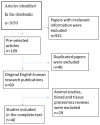Urinary Protein and Peptide Markers in Chronic Kidney Disease
- PMID: 34830001
- PMCID: PMC8625140
- DOI: 10.3390/ijms222212123
Urinary Protein and Peptide Markers in Chronic Kidney Disease
Abstract
Chronic kidney disease (CKD) is a non-specific type of kidney disease that causes a gradual decline in kidney function (from months to years). CKD is a significant risk factor for death, cardiovascular disease, and end-stage renal disease. CKDs of different origins may have the same clinical and laboratory manifestations but different progression rates, which requires early diagnosis to determine. This review focuses on protein/peptide biomarkers of the leading causes of CKD: diabetic nephropathy, IgA nephropathy, lupus nephritis, focal segmental glomerulosclerosis, and membranous nephropathy. Mass spectrometry (MS) approaches provided the most information about urinary peptide and protein contents in different nephropathies. New analytical approaches allow urinary proteomic-peptide profiles to be used as early non-invasive diagnostic tools for specific morphological forms of kidney disease and may become a safe alternative to renal biopsy. MS studies of the key pathogenetic mechanisms of renal disease progression may also contribute to developing new approaches for targeted therapy.
Keywords: biomarkers; chronic kidney disease; proteomics; urine.
Conflict of interest statement
The authors declare no conflict of interest.
References
-
- Kidney Disease Improving Global Outcomes (KDIGO) KDIGO Clinical Practice Guideline for Glomerulonephritis. Nature Publishing Group; New York, NY, USA: 2012. Kidney International Supplements.
-
- National Kidney Foundation K/DOQI clinical practice guidelines for chronic kidney disease: Evaluation, classification, and stratification. Am. J. Kidney Dis. 2002;39:1–266. - PubMed
-
- Sarnak M.J., Levey A.S., Schoolwerth A.C., Coresh J., Culleton B., Hamm L.L., McCullough P.A., Kasiske B.L., Kelepouris E., Klag M.J., et al. Kidney Disease as a Risk Factor for Development of Cardiovascular Disease. Circulation. 2003;108:2154–2169. doi: 10.1161/01.CIR.0000095676.90936.80. - DOI - PubMed
Publication types
MeSH terms
Substances
Grants and funding
LinkOut - more resources
Full Text Sources
Other Literature Sources
Medical
Miscellaneous


